Winemaker Jake Busching established a reputation for crafting excellent wines at Pollak Vineyards. Jake is now the winemaker at Grace Estate, the winery associated with Mt. Juliet Vineyard. We recently met with Jake to chat about his new venture and of course, to sample the wines at Grace Estate.
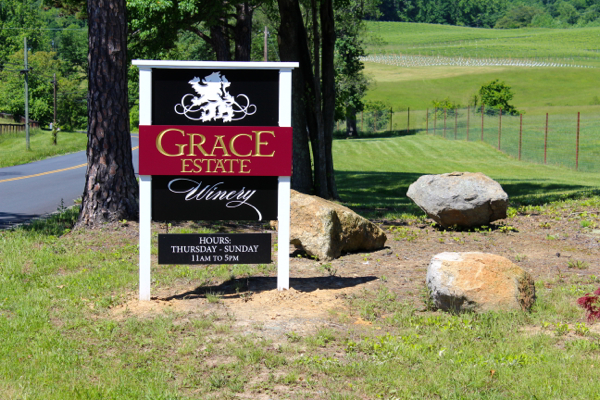
On a lovely morning (and yes with cicadas at full throttle), Jake gave us a driving tour of the Mt Juliet vineyard that earned its reputation for being one of the first to widely plant Viognier. In addition, chardonnay and all of the Bordeaux red varietals are grown in the vineyard. One of Jake’s primary tasks upon arrival at the estate was to rehabilitate the vineyard, and this included better management of the vigor in the vineyard and replacing vines that were no longer productive. An experimental vineyard now grows Chenin Blanc and Pinotage. Other new plantings include Sauvignon Blanc and Pinot Gris. The goal is to maximize the vineyard’s site that boasts elevations of between 750 and 1000 feet.
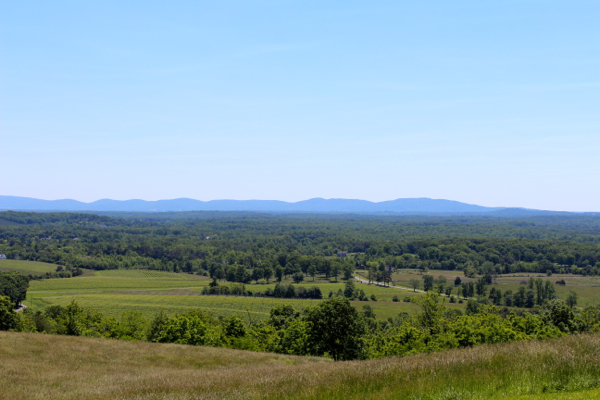
From the vineyard, Jake drove us to the very peak of the estate where we beheld a breathtaking view of the mountains, valleys, and everything else in between. It was truly stunning to behold! An unoccupied mansion overlooks the view, and this may indeed be used in the future as a tasting or events facility. This may be the ultimate destination to view fall colors, too.
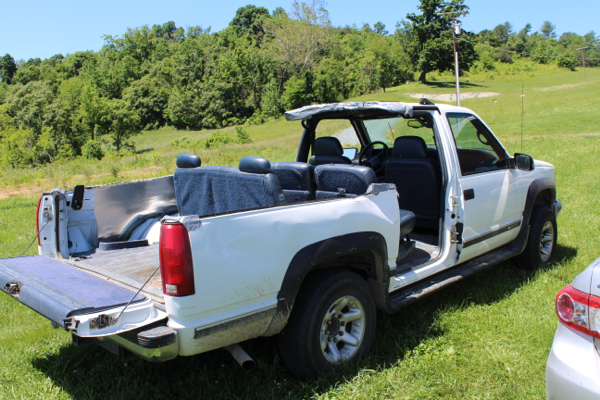
Our next stop was the barrel room, and Jake allowed a chance to preview upcoming 2012 releases. Look for several of these to be hitmakers at Grace Estate. The 2012 Chardonnay, aged in French oak barrels, was an immediate favorite of mine. It possessed characteristic pear and apple notes with a fuller mouth feel and softer oak nuances to create a classic Old World Chardonnay. We also got a sample of the evolving red wines. My own faves included the Merlot that Jake is actually aging in two barrels—neutral oak and newer oak barrels. These will be blended to produce the ultimate product—a fruity yet more complex Merlot with earthy/spicy elements. My other favorites included the Petit Verdot and a Tannat complete with chewy tannins. Paul enjoyed the Merlot (of course) as well as the Petit Verdot, but he was also intrigued with the Malbec and its violet notes.
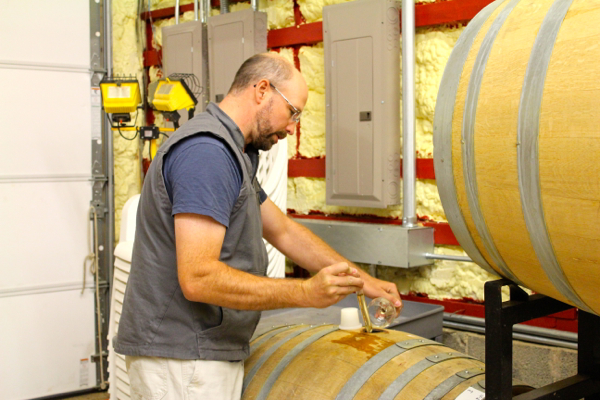
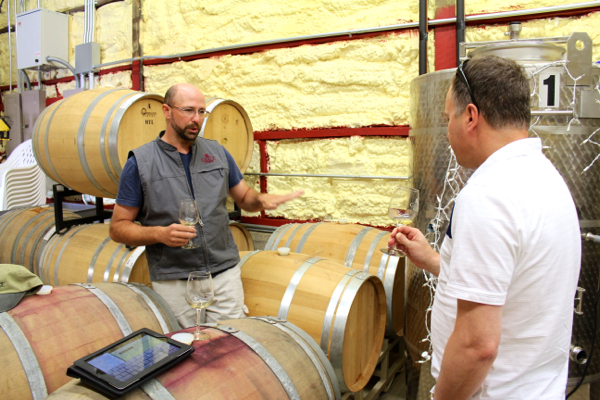
Of course, we also got to taste the current releases being poured in the tasting room. This is the time of year when we seek out summer wines, and the steel fermented 2012 Viognier seemed destined for the wine rack. Floral aromas, peach notes and a crisp feel beg for a shellfish dinner. Our friend Michael Tyler, the lover of sweeter wines, would prefer the off dry 2010 Le Gras Cuve, a fruity blend of Chardonnay, Viognier and Petit Manseng. Strip steaks on the grill? The 2010 Cabernet Sauvignon should fit the bill. Blended with 20% Merlot, this one offers dark fruit flavors, tobacco notes, and a lengthy finish. Paul replenished his stock of 3, the result of Jake Busching’s collaboration with Mathieu Finot of King Family Vineyard and Emily Pelton of Veritas. In addition to the 2010 vintage of 3 (a blend of 1/3 Merlot, 1/3 Petit Verdot, and 1/3 Cabernet Franc), Paul nabbed a bottle of the 2012 vintage that is white. This blend includes 1/3 Viognier, 1/3 Chardonnay, and 1/3 Petit Manseng.
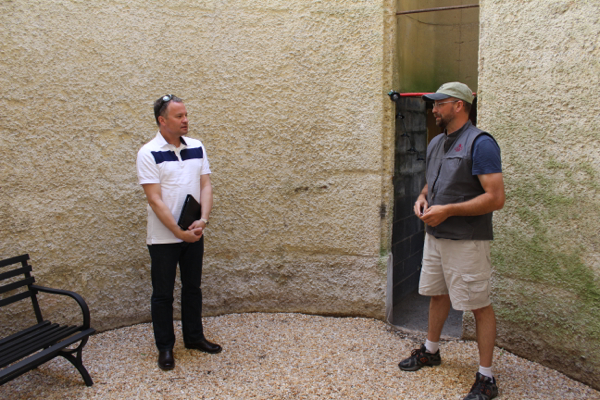
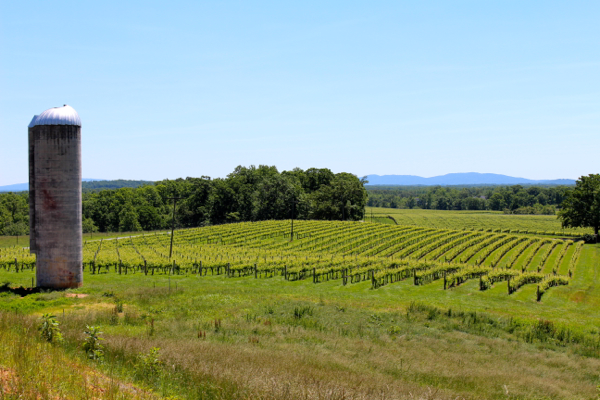
We are always impressed with Jake Busching’s passion for winemaking, and we envision great things at Grace Estate with Jake at the helm. We intend to return to Grace Estate to stay updated on the latest developments and wine releases. In the meantime, plan a visit to Grace Estate, and mention that Virginia Wine time sent you.
Author: Warren
Bloggers Meet Cicadas in Charlottesville
We decided to spend the Memorial Day weekend in the Charlottesville area, and we can confirm that the totally creepy but very cool cicadas can be seen and heard not too far from DC. The drone of the cicadas was relentless throughout our stay, and we often wondered whether we were trapped in an episode of the Twilight Zone or some other sci-fi show from the 1960s. In time, we did come to appreciate their unique sound. However, we did also taste some wonderful wines, and we even got to visit some new wineries. Today’s post, though, will focus two wineries that we’ve already visited: Reynard Florence and an older favorite, Keswick Vineyards.
Reynard Florence: This was our second visit to Reynard Florence, but this time we got to meet owners Roe and Dee Allison. Readers may recall that the Petit Manseng is a specialty here, and it appears as either part of a blend or on its own in all five of the white wine offered for tasting. The 2012 releases of the Reynard Blanc, a white wine blend, and the Petit Manseng Monticello were less sweet than 2010 and 2011 vintages; we both preferred the off-dry versions. The Reynard Blanc 2012, a blend of Traminette (36%), Vidal Blanc (44%) and Petit Manseng (20%) was fermented dry and presented floral aromas with notes of grapefruit and melon. The Petit Manseng Monticello 2012 contained less than 2% residual sugar; we noted pear and honey flavors with a lengthier finish. These complex white wines should be perfect for summer especially if white fish or poultry were on the menu.
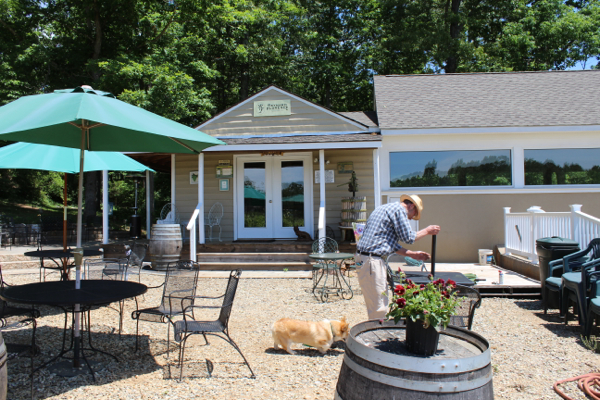
The red wines were next on the tasting sheet, and I continue to classify the Reynard Florence Cabernet Franc 2010 as a classic from Virginia. Lighter bodied with berry and spice elements make for a perfect wine with light grilled fare including chicken and pork. We both gravitated to the Merlot 2010, a more fruit forward wine with characteristics of mixed berries, tobacco and anise. A tannic presence suggested a wine suitable for a heavier steak dish with a side of grilled veggies.
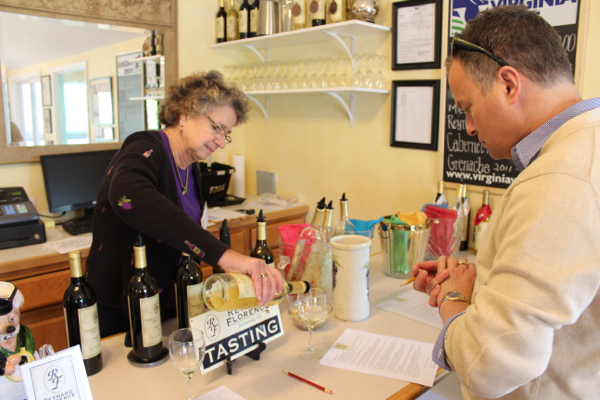
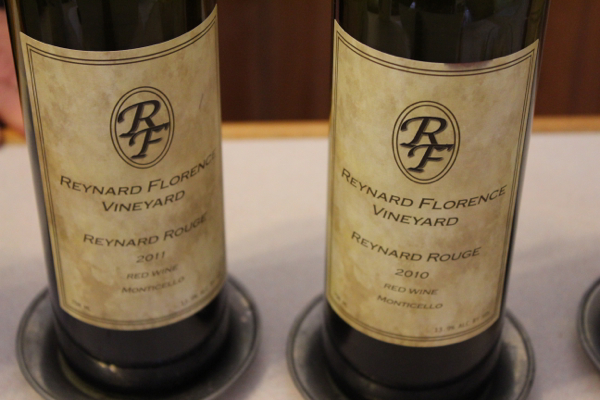
Keswick Vineyards: We always look forward to visiting with Stephen Benard, and were lucky to find Stephen behind the tasting bar at Keswick Vineyards. Our tasting began with a creamy 2012 Barrel Select Rose made from Touriga grapes; we’re big rose fans, and this one was an immediate hit for us. However, the 2012 V2 seems destined to be the summertime wine from Keswick Vineyards. A blend of Verdejo (51%) and Viognier (49%), the V2 presented citrus and apple elements with a grassy note to boot. Its refreshing crispness will take the edge off of any warm summer afternoon. Red-wine drinkers who prefer an easy sipper during the hot weather may like the 2012 Consensus, a blend of Cabernet Sauvignon (50%), Syrah (30%) and Norton (20%). Club members create this blend each year, and this year’s version is very fruity with softer tannins. We were also given a sample of the 2010 massive Cabernet Sauvignon Reserve—yum! Dark fruit, tobacco notes, and noticeable tannins suggest an age-worthy wine.
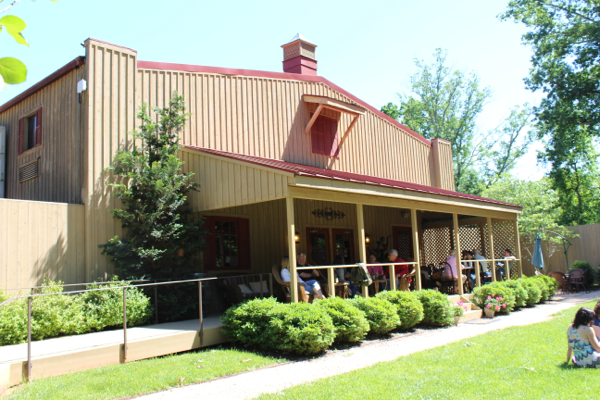
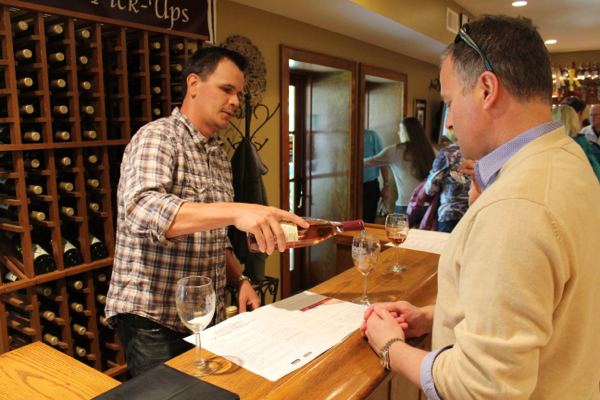
Stephen also took us to the barrel room where he treated us to sneak previews of 2012 white wines. Look for more complex Chardonnays and Viogniers from the 2012 vintage as compared to the leaner 2011 releases. Paul noted that the oak-aged 2012 Chardonnay was “beautiful.” Paul is the stainless steel guy when it comes to white wines, so this was quite the endorsement! I agreed—the rich pear notes and full mouth feel were indeed quite beautiful.
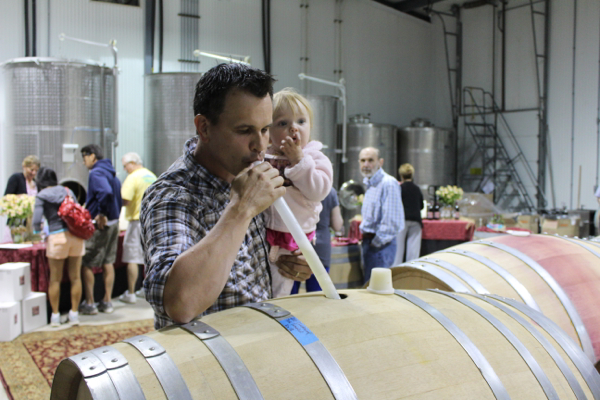
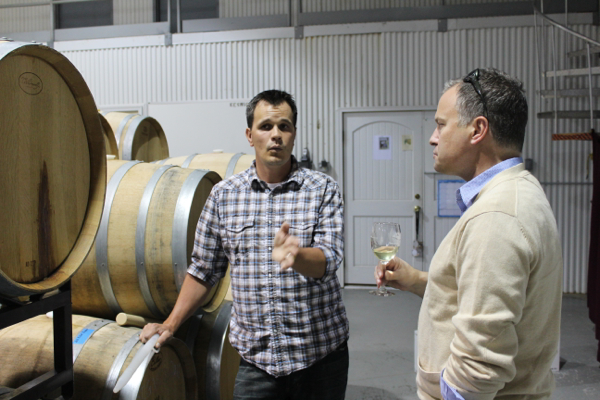
We finished our afternoon with a glass of the V2, and this we enjoyed with cheeses and a baguette. The din of cicada noises provided us with musical entertainment.
Of course, we purchased bottles of our favorites from both Reynard Florence and Keswick Vineyards. Plan a visit to these wineries to find your own summer favorites. Mention that Virginia Wine Time sent you.
Friends, Burgers, and Rose
It’s that time of the year when friends gather for cookouts on warm summer days. Local wineries sometime provide the cookout, and friends meet to enjoy food and wine. We met our friends Matthew and Troy for an afternoon of wine and food at Zephaniah Vineyard; we then extended our leisurely wine and dine afternoon with a tasting at Willowcroft Winery.
We recently met Matthew and Troy at Chrysalis Vineyards and found out that they are fans of Virginia wines. We eventually made a plan to meet them on another weekend at Zephaniah Vineyard. We’re big fans of Zephaniah Vineyard, and we were certain that Matthew and Troy would become fans as well. As luck would have it, our visit there coincided with their Angus Burger weekend; in fact, we all became instantly hungry when we pulled up in the parking lot and smelled the burgers on the grill! However, we all remained focused and knew that we first had to taste wines. How else would we know which wine would pair best with burgers?
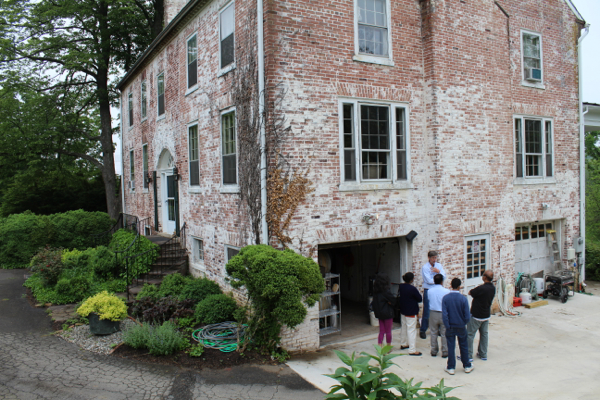
On tap for tasting were six wines, these included two white wines, a rose and three red wines. Of the white wines, we all were big fans of the Viognier 2012 that was aged for seven months in neutral French oak barrels and blended with 6% Petit Manseng. Floral notes, stone fruity element and a lush mouth feel made for a complex wine. With burger in mind, though, we all gravitated to the dry Rose 2012, a blend of Cabernet Franc and Chambourcin. Bright strawberry flavors with a hint of dried herb made for a refreshing pour; aged in French oak barrels for seven months, it also presented a creamier texture. Perfect with burgers and always perfect on a hot summer’s day! On another note, I was likewise impressed with both the Chambourcin 2010 and the Chambourcin Reserve 2010. The latter was poured from a magnum bottle to suggest an age worthy wine produced from a unique vintage.
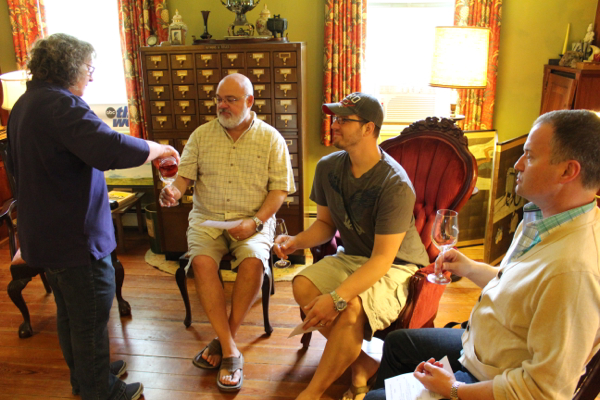
I must also mention that our tasting was done in the library of the 19th century home that serves as the Zephaniah tasting room. It provided a quaint setting in which to sample wines done in an Old World style.
However, we were indeed quite hungry, and the scent of grilled food only made us hungrier. We all concurred that the Rose 2012 was the perfect partner to pair with burgers, and so a bottle of the Rose 2012 made its way to our picnic table.
Lunch and conversation made the afternoon fly by, and we decided to extend the afternoon with a tasting at Willowcroft Winery. One of our favorite tasting associates, Kelly, was on hand to conduct our tasting. With warmer days ahead, our focus was on refreshing sippers that could be enjoyed on their own or with light/grilled fare (like burgers!) The crisp Cold Steel Chardonnay is always a winner on a hot day, and the 2012 vintage presented fruity notes with a touch of minerality to make for a refreshing wine. Matthew and Troy appreciated the off-dry Cabernet Blanc with its strawberry aromas and flavors. For those looking for a different wine to serve with picnic sandwiches, try the non-vintage Applause, an apple wine that should prove to popular with July 4th fireworks; however, it could also be poured with Mr. Turkey on Thanksgiving!
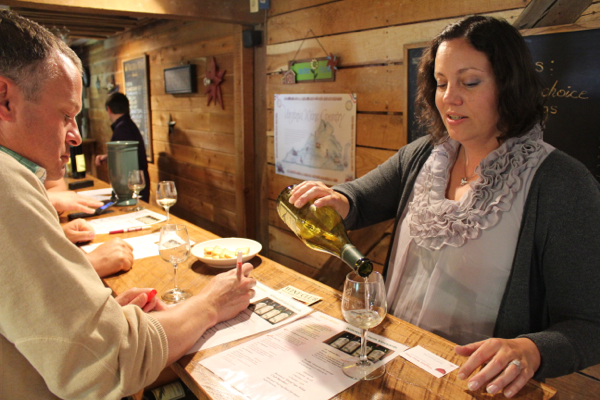
We do know that steaks are often on the grill during the summer months, and if strip steaks and grilled veggies are on the menu, try the 2007 Merlot. Paul remains a fan of this one with its sweet tobacco notes and dark cherry flavors. He bought another bottle to replace the one that we had enjoyed a week earlier.
After our tasting, we all shared a bottle of the Cabernet Blanc and enjoyed the mountain views from our outdoor picnic table. Of course, the time did arrive when we had to leave Willowcroft Winery with our bottle of favorites in tow. Plan a trip to Zephaniah Vineyard and Willowcroft Winery, and be certain to mention that Virginia Wine Time sent you.
Stone Tower Plans for Continued Success
This past weekend was quite gloomy with dense fog and constant rain and drizzle; however, that did not dampen our enthusiasm to visit Stone Tower Winery to catch up on the latest developments. We attended the groundbreaking ceremony at Stone Tower last year, so we were eager to discover the latest happenings there. We met with Bryan Toy, the General manager at Stone Tower Winery, this past Sunday; we were treated to a tour of the winery and vineyards and then a tasting of current releases.
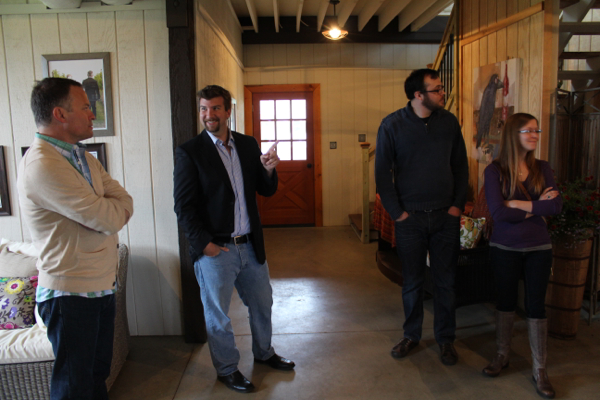
Bryan’s warm welcome made us feel right at home at Stone Tower Winery, and he conducted a tour of the vineyard as well as the winery’s new construction site via golf cart. (I had never been on a golf cart, so I was excited!) Owners Michael and Kristi Huber own over 200 acres of property on the Stone Tower Winery site, and over 20 acres are currently planted as vineyards. Chardonnay and Viognier make up at least six acres of the vineyard with plans to expand white varietals to include Sauvignon Blanc and Semillion. Red grape plantings include Cabernet Sauvignon, Cabernet Franc, Petit Verdot and Merlot. Vineyard practices favor tight spacing to manage nutrients and moisture, and these decisions are made in consultation with viticulture expert Lucie Morton. The vineyards enjoy a high elevation to maximize proper airflow and drainage. However, like all Virginia vineyards, there are indeed challenges in the vineyard at Stone Tower Winery. Unpredictable weather, rot, and disease can throw a curve ball to any vineyard, and Stone Tower Winery stays ahead of the game with a management program that blends both traditional and organic methods to ward off dangers to healthy vines.
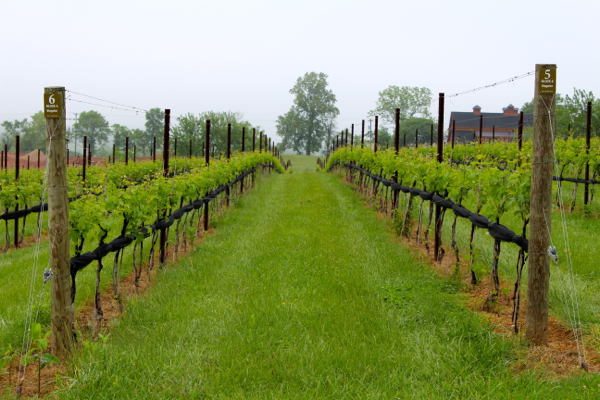
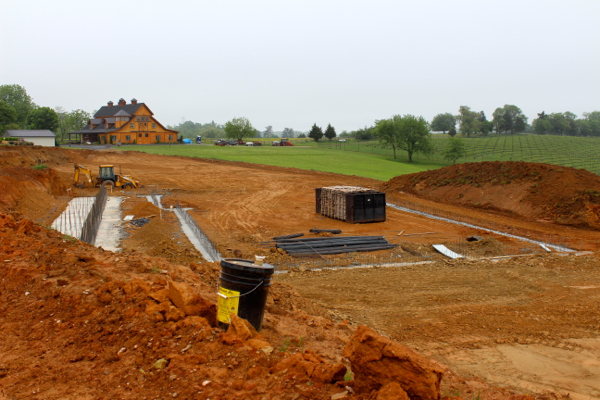
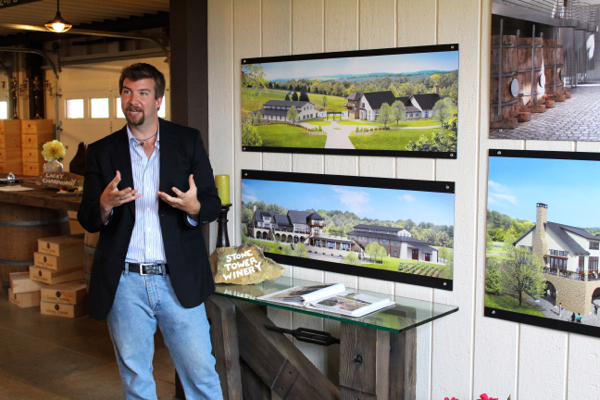
Our on tour was the construction site for the new tasting room and events facility. Space will be cleared in the future for this facility, and it has been designed so that an event such as a wedding and daily business such as wine tasting for costumers can proceed without interfering with each other. In addition to this facility, a new production building is also in the works with an emphasis on state of the art equipment and a sterile environment. The footings have already been poured and construction will begin soon. The goal here is to continue the winemaking excellence associated with Stone Tower Winery. In fact, Napa winemaker Tim Crowe will assume the helm as winemaker at Stone Tower Winery on June 1. Crowe’s appreciation for Virginia’s unique opportunities (and challenges) as well as his dedication to a team effort in the winemaking process suggest that great wines will be poured at Stone Tower Winery.
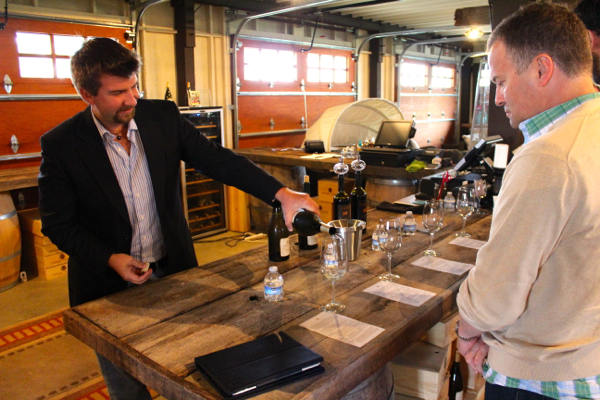
Of course, we are all about the wines. Grand tasting rooms and scenic views are one thing, but quality wines to support it all are more important. Bryan led us to the tasting room and guided us through a sample of the current releases at Stone Tower Winery. Three whites were offered for tasting, and these included the 2012 Lacey’s Chardonnay, the 2012 Viognier (a blend of neutral oak and concrete egg), and a 2012 Viognier produced from a concrete egg. (Yes, a concrete egg. It looks like an atomic bomb and is used most often in France.) We both agreed that the 2012 Lacey’s Chardonnay was the best white wine. Abundant pear notes with a fuller mouth feel made for a wine that was not only a sipper on its own but also a food friendly wine. I’d serve this one with poultry or white fish. Of the two Viogniers, we were split. Paul preferred the blended Viognier with its floral notes and spicy finish; however, I really enjoyed the more fruit forward Viognier done in the concrete egg. Characteristic floral aromas were noted but with a richer palate of stone fruits.
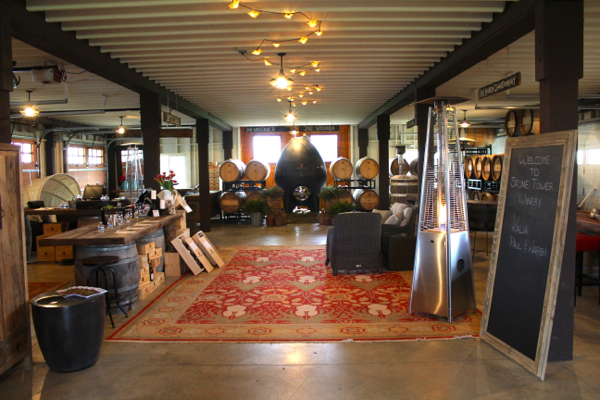
Two red wines were offered for tasting, and these included the 2011 Sanglier Noble and the 2009 Sanglier Noble. Both were blends under the Wild Boar label; label is used to designate wines that were produced from fruit not entirely grown on the Stone Tower estate. Paul and I reached a split decision on the reds. Paul preferred the fruitier, lighter-bodied 2011 Sanglier Noble, a blend of Cabernet Sauvignon, Merlot, Petit Verdot and Cabernet Franc. He noted bright berry aromas and flavors with a note of lavender. My own preference was for the 2009 Sanglier Noble; though a similar blend of grapes, this one was more complex with elements of cherry, sweet tobacco, and dried herbs. I also caught a whiff of violet.
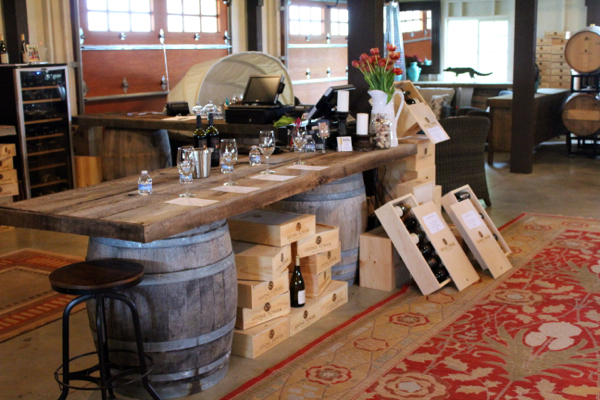
With our tastings done, we concluded that Stone Tower Winery is indeed making quality wines with a plan to continue a path to winemaking excellence; newer facilities will only enhance the ability to enjoy these wines. This sort of undertaking is only successful if qualified individuals work together to make it happen, and this is certainly the case at Stone Tower Winery. Before we left the winery, we made certain to purchase bottles of our favorite wines. We encourage readers to plan an appointment at Stone Tower Winery, and please mention that Virginia Wine Time sent you!
Special Tasting at Linden
Winemaker Jim Law held a special release tasting of upcoming wines at Linden. We look forward to attending this annual event, and this year was no exception. Gorgeous spring weather, bursting blossoms, and fluttering birds provided an idyllic setting to boot.
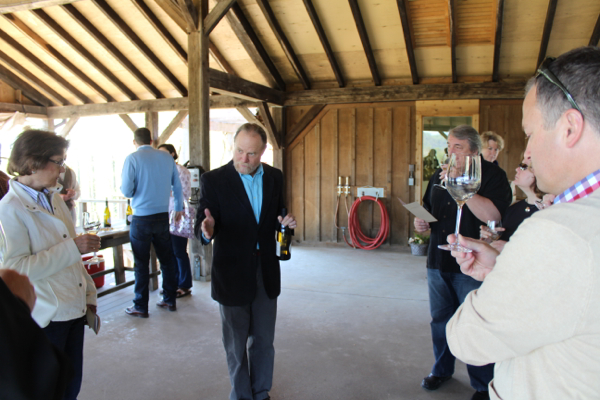
The event featured five tasting stations, and the first station was located on the outdoor crush pad and appropriately named First Sip. Chardonnay was the star attraction here, and there were four of them to sip. These included the 2011 and 2010 Avenius Chardonnay followed by the 2011 and 2010 Hardscrabble Chardonnay. The Avenius site is known for its rocky soils and thus produces leaner wines with mineral characteristics; we both agreed that the 2011 better presented these unique qualities of the Avenius vineyard. Shellfish will be perfect with one! The Hardscrabble site with its clay soils produce fuller-bodied wines; of the two, I preferred the 2010 Hardscrabble Chardonnay with its richer mouth feel.
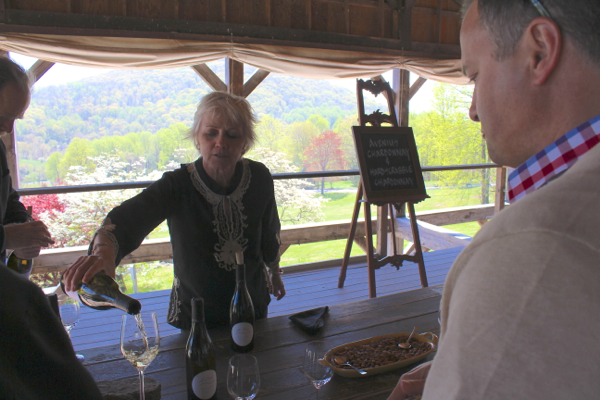
From the white wine station, we moved on to the red wines held in the barrel room. We moved through four tables that presented a total of seven red wines. The first table featured a 2010 Cabernet Franc, and this will be the first time that Law has released a single-varietal bottling of Cabernet Franc in quite some time; however, the 2010 Cabernet Franc proved to be jammier and more muscular than in previous years. Law therefore opted to bottle it on its own. We approved of the decision and enjoyed our sample with a spicy lamb meatball.
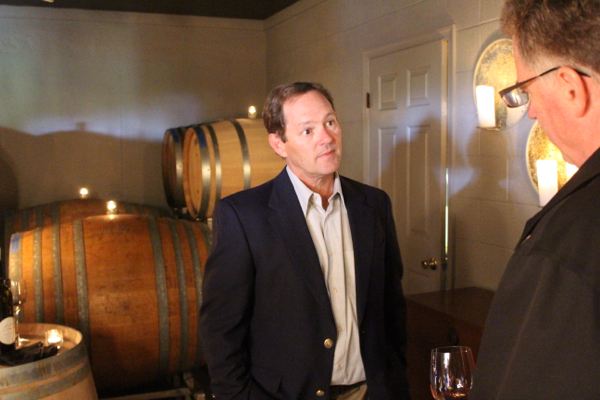
The other tables provided more opportunities to sample wines from the 2009 and the 2010 vintages. In all cases, we tended to prefer the 2009 pours. The most accessible was the 2009 Boisseau Red, a blend of 43% Merlot, 31% Cabernet Franc, and 26% Petit Verdot. The 2009 Hardscrabble Red proved to be the most complex and was dominated by Cabernet Sauvignon (64%) then Merlot (14%) and Petit Verdot (3%). Paul was a big fan of the 2009 Avenius Red with its plum notes and earthy elements.
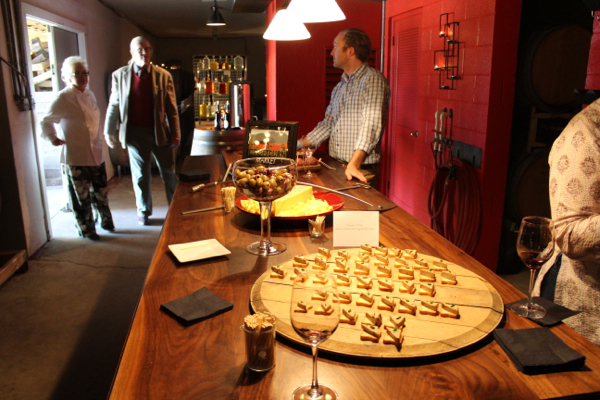
Though we did enjoy the 2009 vintages, it was hard to ignore the potential for the 2010 red wines. The 2010 harvest was best since the heralded 2007 season, and it was telling that Cabernet Sauvignon heavily dominated all of the 2010 blends. I am always a fan of the Hardscrabble reds, and once again the 2010 Hardscrabble Red was my favorite of the still evolving 2010 blends. Remember, though, that the 2009 blend contained 64% Cabernet Sauvignon. The 2010 version? 83% I have no doubt that the 2010 Hardscrabble Red will have great cellaring potential once it is released.
We completed our release tasting and then opted to try the current releases in the tasting room. Here again we were able to taste a contrast of seasons. Law has released a 2011 Red, a bright and light bodied red blend that would be suitable with a pizza, burger, or spicy fare. (I called this one a Beaujolais-style wine due to its soft, fruity nature, but I’m not sure if Jim would consider it a complement.) Anyway, it was the product of a very rainy and difficult year yet it was very quaffable. Be sure to enjoy soon, though. It might be an option for Thanksgiving dinner, too. (Paul ended up buying two bottles!). On the other hand, the 2010 Claret was more complex with smoky notes and ripe dark fruit flavors. Steak on the grill? This would pair nicely. Unlike its younger sibling, this one will be able to hang out on the wine rack for a while.
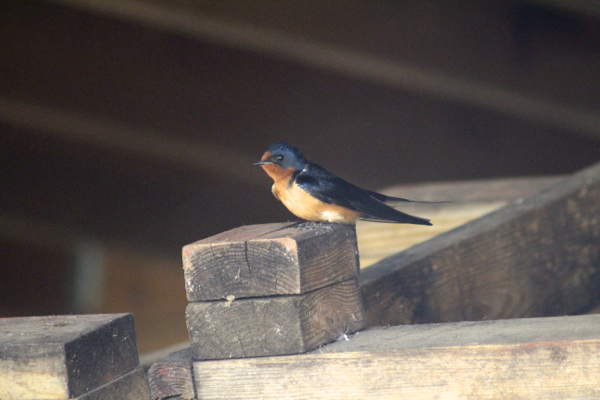
Our tastings were done, and we decided to linger for a while with a glass of our favorites. I savored a glass of the 2009 Hardscrabble Red, and Paul enjoyed a glass of the 2009 Avenius Red. We munched on a smoky gouda cheese, summer sausage, and a baguette, and Paul snapped pictures of barn swallows as they flew back and forth between a dark space beneath the deck and nearby trees.
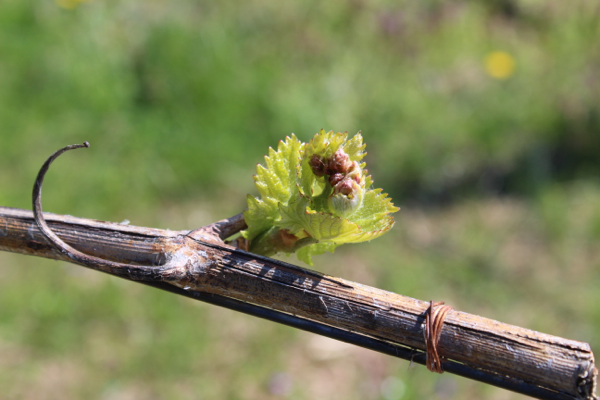
We enjoyed our special release tasting and made sure to purchase some very special wines. Plan a trip to Linden, and mention that Virginia Wine time sent you.
Bloggers Judge Sparkling Wines
Yes, we are back on track with our regular posts about Virginia wine, and this entry will present the results of a tasting that featured sparkling wines. This has become something of a tradition for Virginia bloggers, and we thank Frank Morgan of Drink What You Like for his continued efforts in putting this contest together. Other Virginia wine bloggers in attendance were VWD and GEG from Swirl Sip Snark, Anthony and Jaymie from Virginia Pour House blog, Megan Headley who writes for CVille Weekly, Allan and Kris from Cellar Blog, and Pia Mara Finkell from The BuzzBin. This year’s tasting was held at Early Mountain Vineyards, and thirteen bubblies were tossed into the ring.
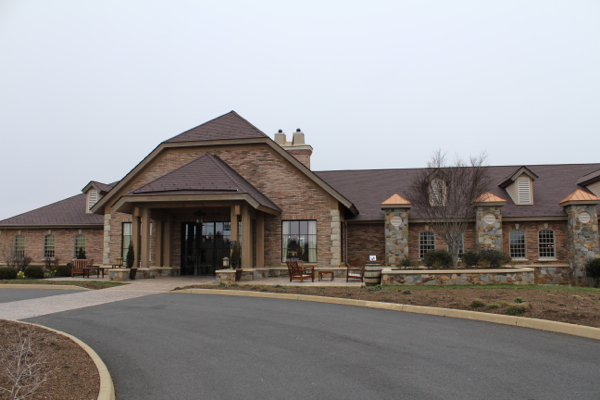
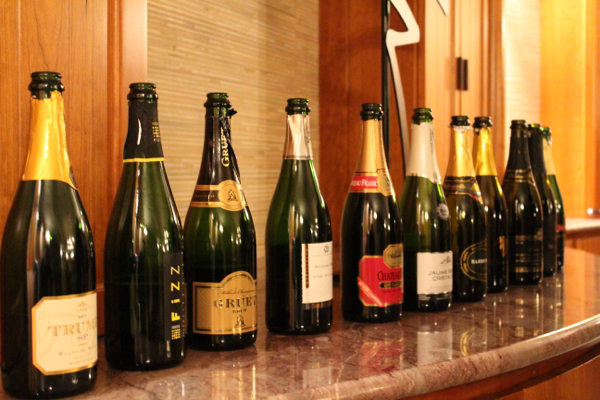
Of the thirteen, ten were from Virginia, one was from the Finger Lakes, another was from New Mexico, and a final outside entry hailed from Spain.
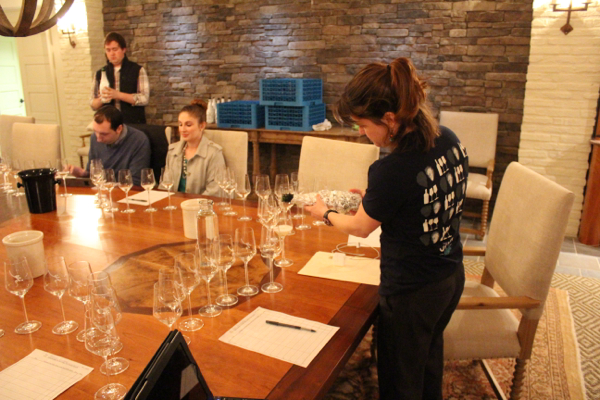
The judging was done blind. What were the results? How did Virginia’s sparkling fare? When all was tasted, here is how they ranked:
1. Thibaut-Janisson 2008 Cuvee D’etat: This was also my own personal favorite with nice yeasty notes and elements of apple and pear.
2. Thibaut-Janisson NV Blanc de Chardonnay: This also earned the second spot on my own list.
3. Trump 2008 Blanc de Blanc
4. Thibaut-Janisson NV Fizz: This one earned my third place finish.
5. Veritas NV Scintilla
6. Dr. Frank Winery 2006 Chateau Frank (from the Finger Lakes region)
7. Barboursville NV Brut
8. Prince Michel Winery NV Sparkling Wine
9. Gruet Winery NV: Last year it earned the top spot; I placed this one at #11 on my own scorecard. Off aromas and a flatter palate led to a dramatic fall in the ratings this year.
10. Paradise Springs Winery NV Apres
11. Afton Mountain 2010 Bollicine
12. Horton NV Sparkling Viognier: This one earned my #13 rating. It had no characteristics of a sparkling wine. Not one bubble, and I searched in vain for at least one to dance its way to the top of the glass. It tasted like a flat Viognier, and I do mean flat.
13. Jaume Serra Christalino NV Brut Cava: Off aromas and an odd finish sent this one to the bottom of the rankings. It did bubble, though, and for that reason I gave it an edge over the Horton Sparkling.
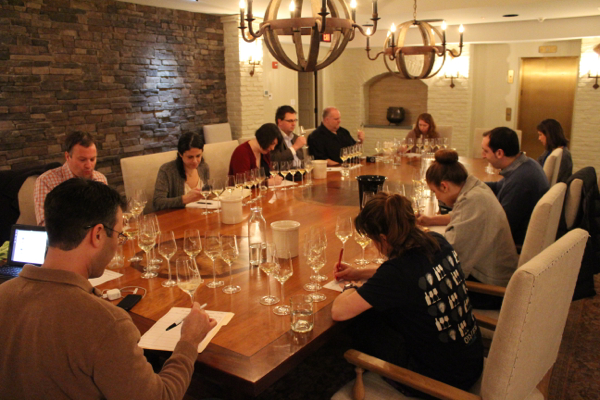
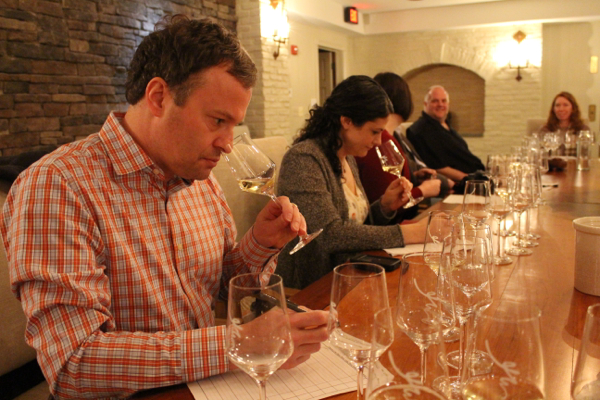
So cheers to Virginia: in particular, kudos to Claude Thibaut-Janisson for his continued excellence in producing premier sparkling wines. Special thanks must be extended to Michelle, Jacob, and the entire Early Mountain team for not only hosting the event at their wonderful facility but also for providing us with the stemware, cheeses, breads and deli meats to nibble as we sipped.
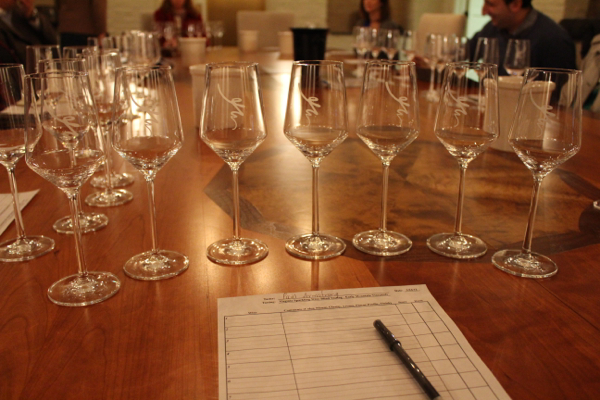
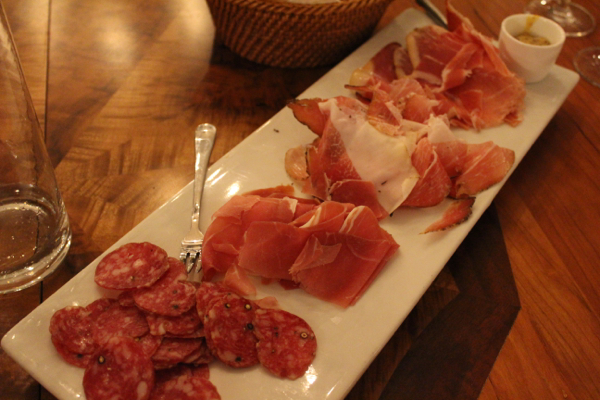
This is the time of year for graduations, weddings, engagements, and other special events. Celebrate a special occasion with a bottle of sparkling wine from Virginia. The local wine shop may sell the Thibaut-Janisson selections; if not, ask that they do. Mention that Virginia Wine Time recommends them!
Drink Local Wine (Continued)
So I left off with the wine media junket arriving at the Waterfront Kitchen in Baltimore for a food and wine dinner. The menu continued with the locavore and locapour theme, and it featured locally grown food and locally produced wines.
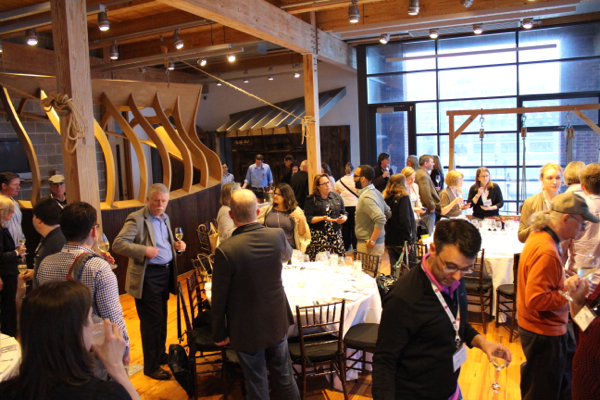
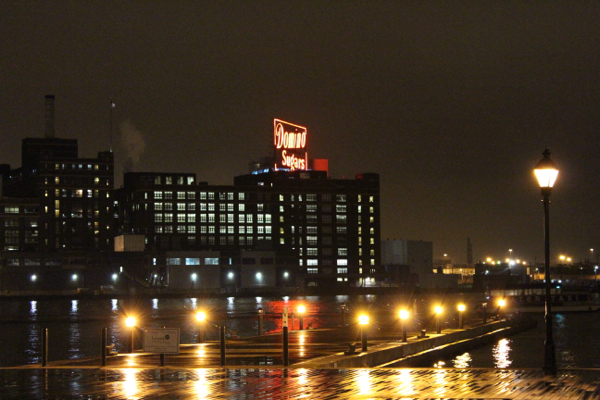
The menu included:
Reception: Bordeleau Vineyards and Winery Blanc de Blancs NV
First Course: Black bass, spring pea risotto, and beurre rose
Paired with Knob Hall Winery Rose 2011
Second Course: Gallentine of Chicken, pork sausage, swiss chard and mushroom jus
Paired with Port of Leonardtown Chambourcin 2010 (my fave on the menu)
Third Course: Roasted lamb rack, black truffle risotto, rosemary essence
Paired with: Basignani Winery Lorenzino Reserve 2005
Dessert: Picholine olive oil cake, vanilla ice cream, crème anglaise
Paired with: Serpent Ridge Vineyard Slither NV
Friday was certainly filled with food and wine. Saturday, though, was the day with panel discussions on the past, present and future of Maryland wine. Four sessions were held on these topics, and session moderators included wine blogger and publisher Carlo di Vito, wine columnist Dave McIntyre, Kevin Atticks, executive director of the Maryland Wineries Association, and viticulturist Dr. Joseph Fiola. Panelists included author Maguerite Thomas, chef Jerry Pellegrino of Waterfront Kitchen, Jade Ostner, director of event for the Maryland Wineries Association, radio host Al Spoler, winemakers Ed Boyce of Black Ankle, Dave Collins of Big Cork, Robert Deford of Boordy, and Tom Shelton of Bordeleau.
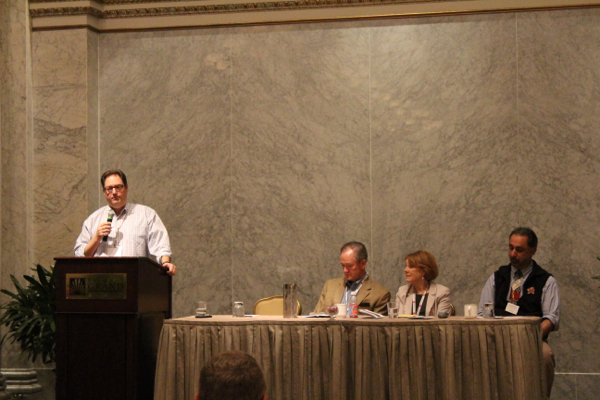
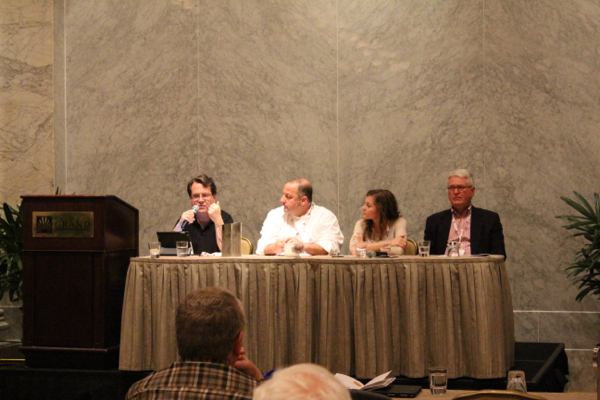
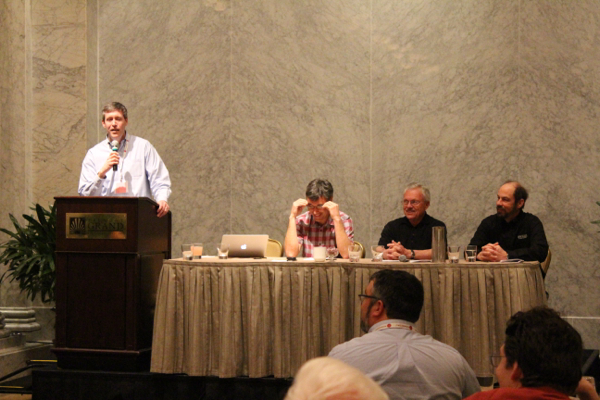
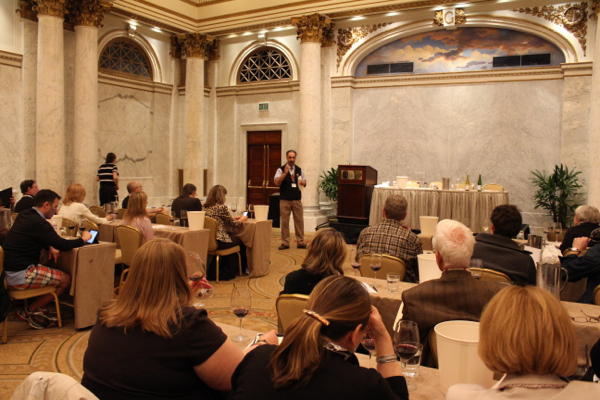
I will not get into the nitty gritty details of each session; however, I will summarize the ten conclusions that I drew from them:
1. Maryland wines were not very good in the 1980s and 1990s; however, they have improved in the past decade. Skilled winemakers and viticulturists such as Lucie Morton have contributed to this.
2. Maryland’s climate shares some characteristics with Virginia and Pennsylvania; the best grape growing regions in the state are those that have higher elevations and rocky, less fertile soils.
3. Warm days and cool nights are ideal during growing season.
4. Best grapes for the state seem to be cabernet franc, chambourcin, petit verdot, sauvignon blanc and albarino with potential for quality chardonnay.
5. The focus especially for red wines should be blends rather than bottling single varietals. This is critical for troublesome years such as 2011.
6. Chambourcin has the potential to be the Norton of Maryland.
7. Maryland’s challenge is not quality but constituency, and winemakers should look to Europe for inspiration since they face similar year-to-year challenges.
8. Tight spacing of vines may be a best practice; this absorbs rain water.
9. Maryland wineries continue to open; 62 are now open for business
10. Consumers must enjoy the wine tasting experience and made aware of improved quality. Maryland Wineries Association will continue awareness programs such as Eat Drink Go Local.
The conference concluded with a twitter taste off that was held at Camden Yards. At least 20 Maryland wineries were on hand to pour their finest wines, and tasters were encouraged to tweet their impressions. The taste off was opened to the public after 4 PM. What were our favorites?
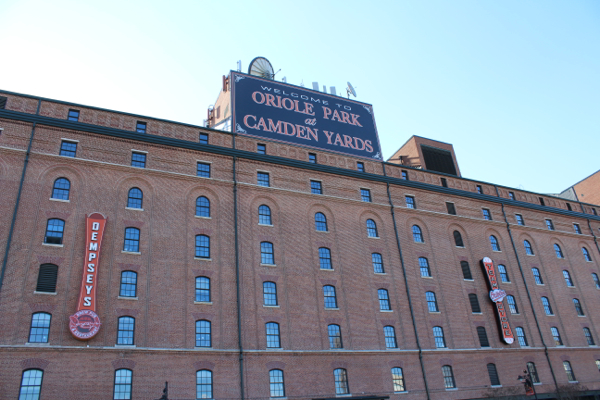
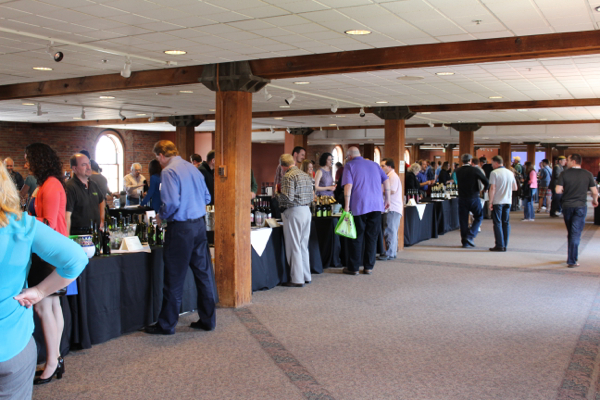
White Wines:
Black Ankle 2011 Albarino
Old Westminster 2011 Chardonnay
Sugarloaf 2011 Pinot Grigio
Red Wines:
Big Cork 2012 Meritage
Boordy 2008 Cabernet Franc Reserve
Black Ankle 2010 Crumbling Rock
Sugarloaf 2010 EVOE!
The ultimate champions of the twitter taste-off were the 2011 Albarino from Black Ankle and the Sugarloaf 2010 EVOE!
Drink Local Wine provided a perfect opportunity for Maryland winemakers to present the best wines, and there was no doubt that Maryland can produce quality wines. Most of our fellow bloggers had never tasted Maryland wines, and I must confess that we have visited only a couple of Maryland wineries. However, that will be changing. We plan to frequent Maryland wineries more often, and we encourage readers to do the same. Mention that Virginia Wine Time sent you.
Drink Local Wine Comes to Maryland
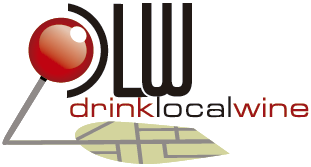 Drink Local Wine, established in 2008 by Jeff Siegel of The Wine Curmudgeon and Washington Post wine columnist Dave McIntyre, held its fifth annual drink local conference in Maryland on April 13. In previous years the conference was held in Texas, Virginia, Missouri and Colorado. We attended the event and concluded that it was a wonderful way to showcase the great strides made by Maryland’s winemakers. The next two posts will capture the highlights of the conference that culminated in a twitter tasting held at Camden Yards.
Drink Local Wine, established in 2008 by Jeff Siegel of The Wine Curmudgeon and Washington Post wine columnist Dave McIntyre, held its fifth annual drink local conference in Maryland on April 13. In previous years the conference was held in Texas, Virginia, Missouri and Colorado. We attended the event and concluded that it was a wonderful way to showcase the great strides made by Maryland’s winemakers. The next two posts will capture the highlights of the conference that culminated in a twitter tasting held at Camden Yards.
Our participation in the conference actually began with a media tour of Maryland wineries on Friday, April 12. We boarded a bus with other bloggers, columnists, and writers from the Tremont Suites Hotel in Baltimore. Our first destination was Sugarloaf Mountain Vineyard located in Dickerson, Maryland. Winemaker Benoit Pineau was on hand to conduct a tasting of Sugarloaf’s wines; however, Elk Run Vineyards’ representatives were also on hand to likewise showcase their best wines. A buffet of cheeses, olives, breads and deli meats were offered for enjoyment. Favorites included the 2011 Comus, a lush Bordeaux blend created in a difficult year. Yes, Maryland got the same copious amounts of rain in 2011 that plagued Virginia that summer. My ultimate favorite, though, was the 2010 EVOE!, so named after the excited cries of ancient Bacchanalians to honor the god, Bacchus. In a contrast of seasons, the 2010 EVOE! was more dark-hued and complex. Like Comus, it is a Bordeaux-style blend. From Elk Run, I enjoyed the Alsatian-styled 2011 Gewurztraminer. Tours were offered, and an added treat was the ability to vote for an upcoming release. Benoit Pineau asked us all to sample four red wine samples and then to vote on a favorite, and these included a Cabernet Franc, a Merlot, a Cabernet Franc (75%) and Merlot (25%) blend and then a Merlot (75%) and Cabernet Franc (25%) blend. These were all from the 2012 vintage. My vote? The Cabernet Franc/Merlot blend. Benoit will be the ultimate judge on which will be finally bottled, but I will definitely follow up to see if I picked the winner!
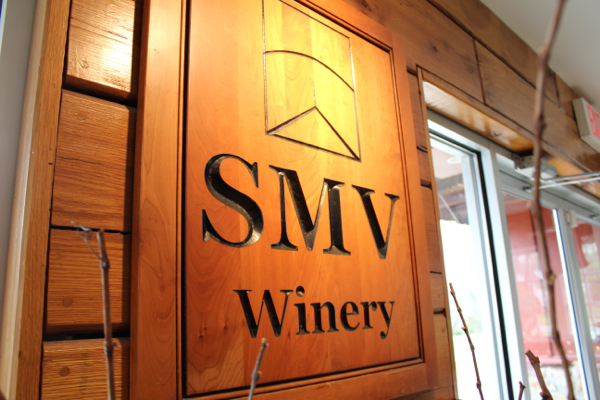
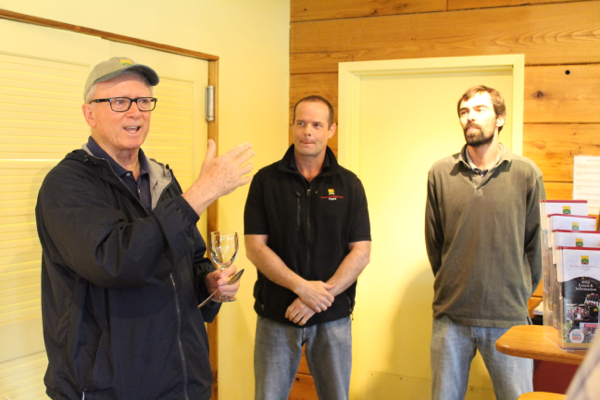
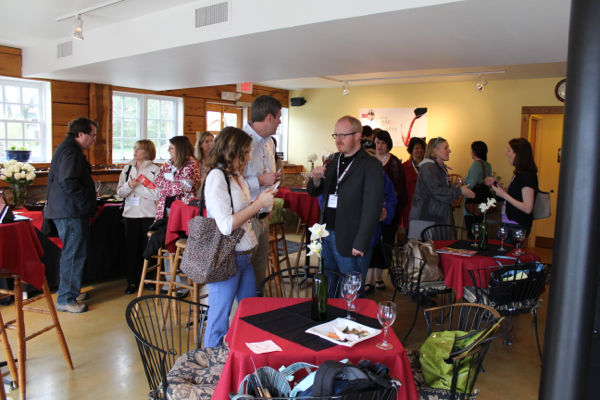
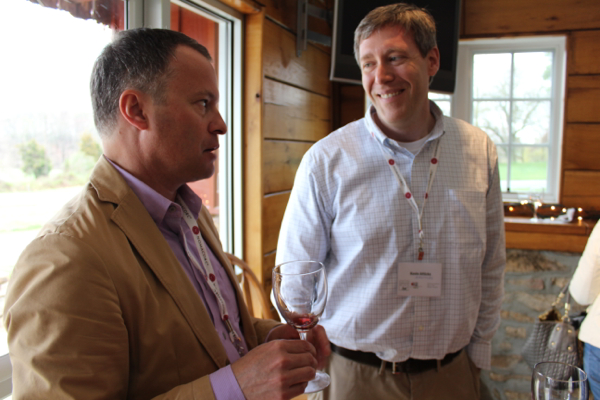
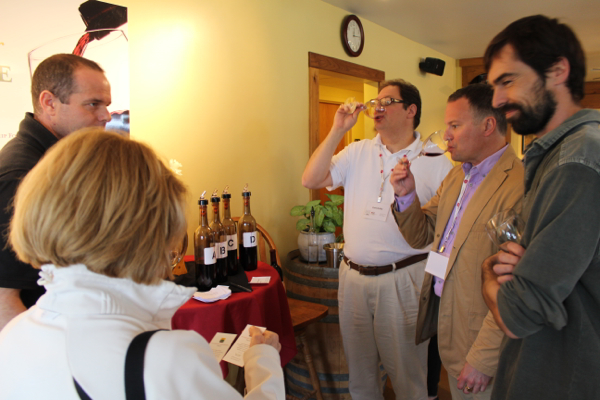
By lunchtime, it was time for the press junket to leave Sugarloaf Mountain Vineyards; our next destination was Black Ankle Vineyards in Mt. Airy. Did I mention lunch? It was here that we were treated to a lunch prepared by Woodberry Kitchen of Baltimore, a restaurant devoted to eating and drinking local. We were greeted by a glass of an outstanding 2012 Gruner Veltliner (yes, Gruner in Maryland) that complemented seasonal tartines. Lunch began with a warm greeting from owners Ed Boyce and Sarah O’Herron. They gave a brief synopsis of their story and the decision to make wine in Maryland. The couple opted to purchase farm property with the rockiest, least fertile soil possible; not good for corn or tomatoes, but great for a vineyard. Anyway, we tasted the excellent results of their decision. With grilled Chesapeake oysters we sipped the floral 2011 Bedlam, a blend of Chardonnay, Albarino, Muscat, Viognier and Gruner Veltliner. Wheat berry salad with radishes, pea shoots and pecans was paired with a berry-driven 2010 Rolling Hills, a red blend that included all of the Bordeaux grapes. The main event, though, was a platter of whole Maryland Suffolk grilled lamb, lamb sausage, scallions, and potatoes. The lamb was indeed fresh and local; Woodberry Kitchen’s George the Butcher butchered the lamb, and it was absolutely divine. Equally divine was the 2010 Leaf Stone Syrah with its elements of tobacco, dark plum, and blackberries. (This was my favorite pour of the day.) A dessert course rounded out our dining experience, and we were served Beiler’s Heritage Acres cornflour cake made from locally produced flour. This was partnered with a port-style Terra Dulce II.
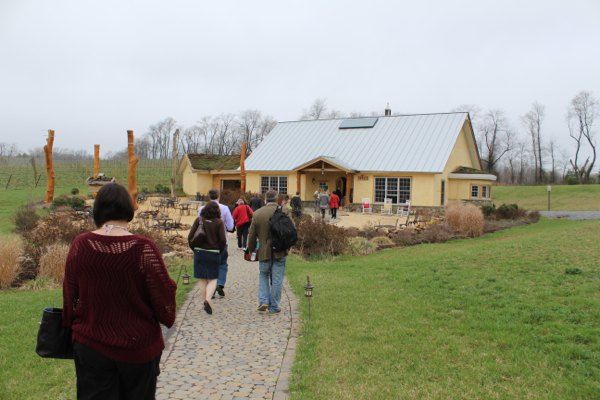
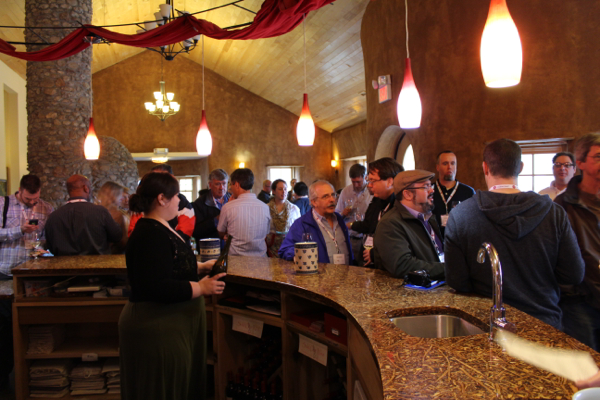
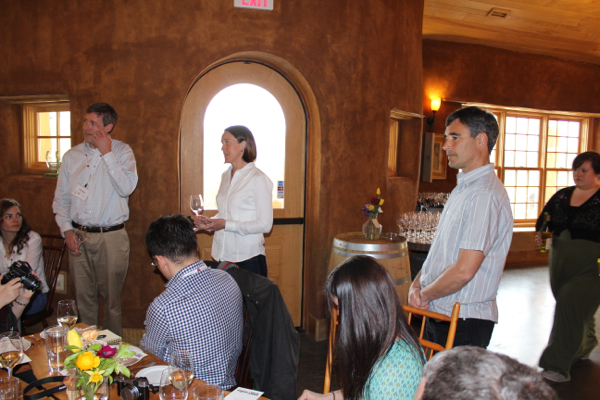
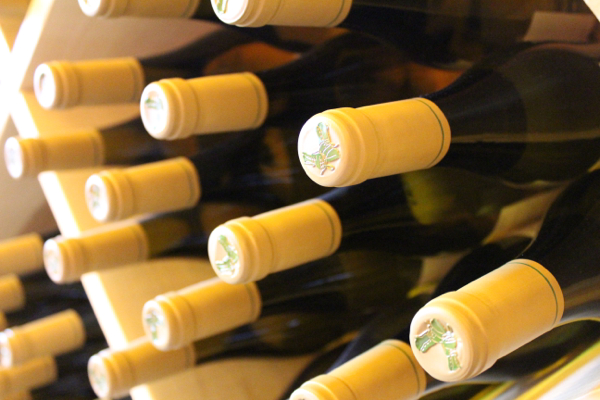

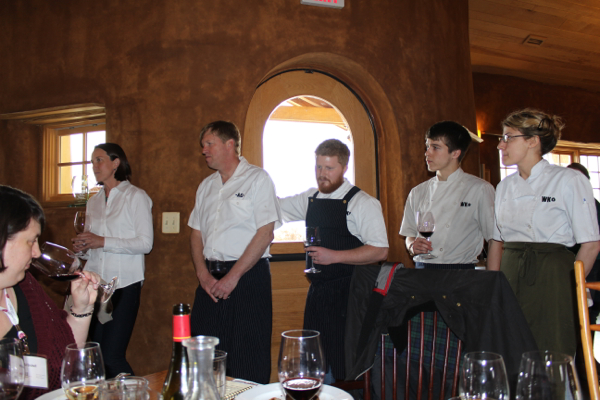
With our appetites satisfied, we departed for the last leg of our tour that concluded with a visit and tasting to Boordy Vineyards located in Hydes, Maryland. Vineyards here are nestled in the Piedmont Plateau and the Blue Ridge Province. Robert Deford greeted us and provided a brief history of the winery. Boordy Vineyards is the oldest commercial winery in Maryland, and Philip and Jocelyn Wagner established the winery in 1930 to protest Prohibition. Deford bought the property in 1980; however, he replanted the vineyard in 2005 to maximize its potential to produce world-class wines. We tasted the results in the tasting room. The buzz-worthy wines were the rich 2010 Cabernet Franc Reserve and the 2010 Landmark Reserve, an award winning blended red wine. Also on hand to pour their wines was Cygnus Wine Cellars and Fiore Winery. Fiore Winery offered two grappas, and these were an interesting twist to the traditional line up of white, red and dessert wines.
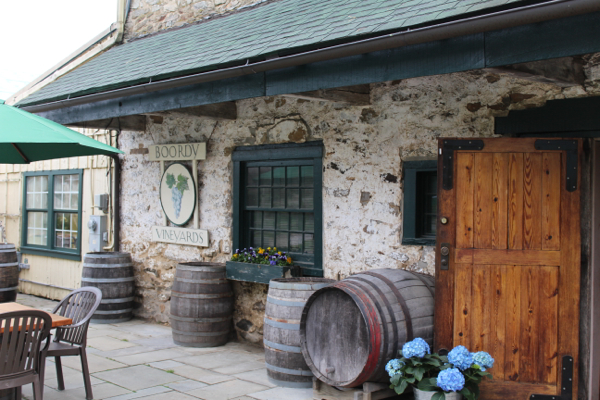
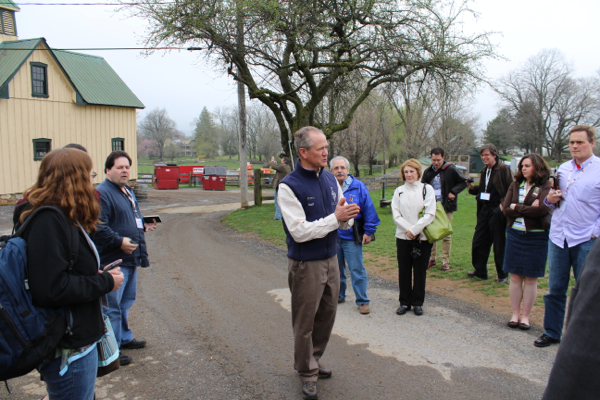
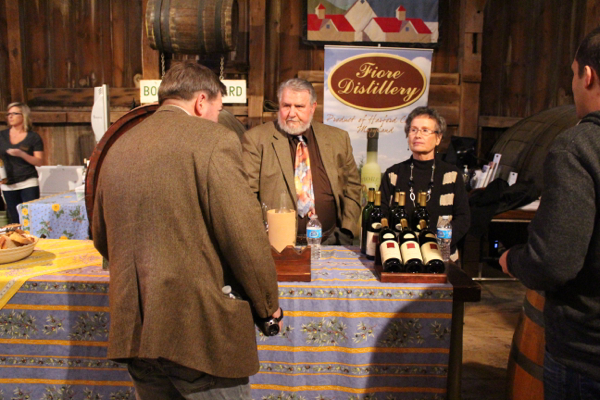

The day ended with a dinner at the Waterfront Kitchen in Fells Point, an event hosted by the Maryland Department of Agriculture and the Maryland Wineries Association. Yes, more food and wine. However, I will provide details about this experience in the next post. Before I sign out, though, I must thank Nomacorc for sponsoring the very comfy bus that took us hither and yon. I’ll write more about Nomacorc in a future post.
Start your own tours of Maryland wineries soon. The wineries mentioned in this post are great places to begin. Just mention that Virginia Wine Time sent you!
Italian Bubbles
I attended a tasting of Lombardy’s version of bubbly from Franciacorta. The tasting was held at the Capital Wine School and conducted by Michael Franz, a local wine writer, educator and consultant.
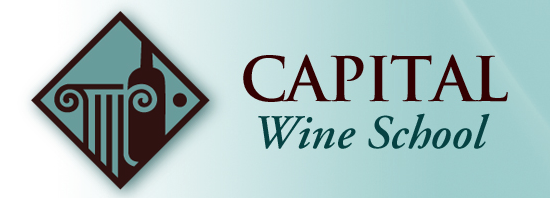
Readers may recall that I have tasted sparkling wines from Franciacorta in the past as part of a Taste of Lombardy event in DC. However, this particular tasting focused exclusively on Franciacorta. So what did I think? Well, I’ll first provide some background about Franciacorta and the wines that is produces. Franciacorta is located in northern Italian region of Lombardy; in particular, in the foothills of the Alps. Still wines have been made in this region since the 1500s; sparkling wines, though, have been produced within the past 50 years. Franciacorta sparkling wines are produced from Chardonnay, Pinot Noir, and Pinot Bianco. The styles range from Saten (blanc de blanc), Rose, Vintage, and Reserve. In Virginia, reserve wines are those that the wine maker deems to be deserving of the reserve label. In Italy, though, it is not that simple. Italian laws dictate which wines can classified as reserve wines, and in Franciacorta, reserve wines (labeled Riserva) are those that stay “on its lees for a minimum of 60 months.”
So what did we taste, and what did I like? We sampled five sparkling wines from Franciacorta, and they included the Ricci Curbastro Saten 2007 ($40), Bellavista Cuvee Brut ($40), Ricci Curbastro Brut ($36) Montenisa Brut Rose ($38), and Bellavista Grand Cuvee Rose 2007 ($65). The Saten was described as a consumer category wine and one that would appeal to an American market. I would compare it to the least favorites of the Virginia sparkling tasting—very fruity with limited acidity and a few bubbles. It suggested sweetness, and I thought of Sunday brunch at a non-descript café. However, the NV Bellavista Cuvee Brut stepped forward to show off what this region can produce. This one spent seven months on oak and was crafted from grapes of several vintages. Fruit elements were more delicate and nuanced; yeasty notes, a firmer mid-palate structure, and bright acidity resulted in a more classic sparkling wine. Exceeding this one was the Bellavista Grand Cuvee Rose 2007, reserve made from both Chardonnay and Pinot Noir. Recall the definition of reserva—it stayed on the lees for a minimum of 60 months; more finesse and better balance were my top descriptors. Not to be outdone, though, was the Montenisa Brut Rose with its strawberry aromas, bready notes, and refreshing acidity. The Ricci Curbastro Brut rated above the Saten but below the other three sparkling wines.
So its NYE and I have a house full of guests. Which Franciacorta sparkling wine do I chill? For $40 it was tough to beat the Bellavista Cuvee Brut. Let’s say it’s a tenth year anniversary or some other very special occasion; then I would vote for the Bellavista Grand Cuvee Rose. At $65, it was on par with Champagne wines (and perhaps a few bucks less.)
This was certainly a nice, intimate tasting with a handful of industry folks who were far more knowledgeable than I. Michael Franz was indeed the expert on the Franciacorta region; in fact, he explained that global warming might be playing a role in that region’s ability to produce quality sparkling wines. This phenomenon has been observed in Champagne, and Franciacorta may be on the verge of adjusting its regulations on where grapes intended for sparkling wines can produced. Franciacorta sparklings are now made from the region’s cooler climates; however, there is a concern that warmer temperatures at these altitudes may produce flabbier wines; therefore, new regulations may require that these grapes be grown at a higher altitude. (Climate change and the impact on wine regions is itself a fascinating topic.)
I also had the pleasure of meeting Jay Youmans, the master sommelier who has revolutionized the judging at the Virginia Governor’s Cup. He is the managing director of the Capital Wine School in Washington DC; in particular, it is near the Friendship Heights Metro. The school offers a number of courses that range from winetasting 101 to master-level, and I may just check out some of these courses for my own enrichment.
Conduct your own tasting of sparkling wines and toss in some samples from Virginia and Italy. Can’t find them at the local wine shop? Ask the manager to stock them. Want to know more about wine tasting? Take a class at the Capital Wine School. Of course, mention that Virginia Wine Time sent you.
Cleve, Barrel Tasting, and More at Philip Carter
The last weekend of March was very chilly, but that did not deter us from partaking in a barrel tasting at Philip Carter Winery. We also got to sample the very special 2010 Cleve and the newly released 2012 Rose called Rosewell. An extra highlight of our visit, though, had to be the personal barrel tasting conducted by winemaker and native Virginian Jeremy Ligon.
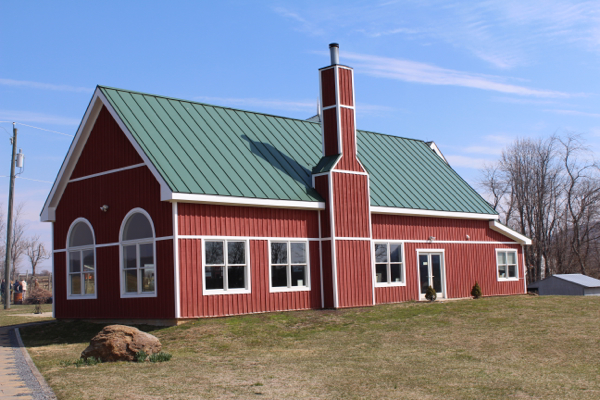
Our purpose for visiting Philip Carter Winery was indeed to sample the 2010 Cleve. Why? It just won a gold medal at the Virginia Governor’s Cup, and we are determined to try each gold medal winner as they are released to the public. The Cleve line is usually a blend, and this award-winner was a 50-50 mix of Tannat and Petit Verdot. The 2010 harvest in Virginia was one for the record books, and we expect this particular wine to age quite nicely. It possessed a smoky nose with dark fruit elements and a bit of caramel to finish; we noted firm tannins too. I purchased a bottle to rest on the wine rack and will serve with roasted meat. However, for more immediate consumption, we enjoyed the 2012 Rosewell, a dry rose wine made from Tinta Cao grapes and named after the Rosewell mansion that became home to one of Robert Carter’s daughter’s, Judith Carter. Floral notes and strawberry flavors along with a crisp acidity make for a wine that is both refreshing and versatile. Stock up on the Rosewell and enjoy during the warmer months!
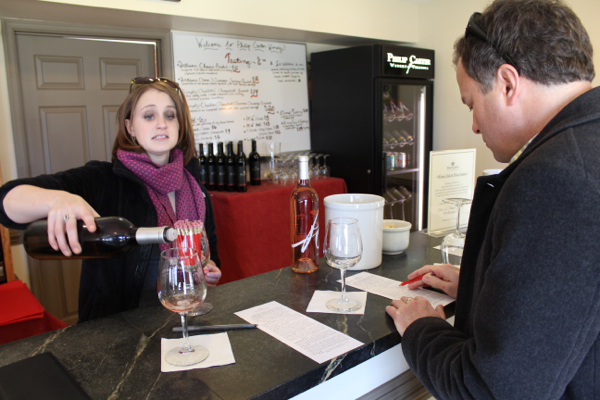
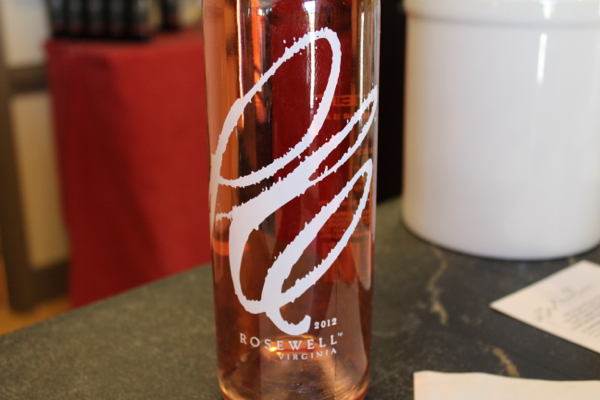
Our visit to Philip Carter coincided with a weekly program during March that featured barrel tastings each Saturday. We just happened to be there on the last Saturday of the program; of course, we just had to participate. Lucky for us, winemaker Jeremy Ligon was on hand to conduct our tasting. Jeremy has been at the winemaking helm at Philip Carter for a year, and he certainly has a vision for Philip Carter wines. We sampled 2012 Chardonnays in both neutral and newer French oak barrels, 2011Bordeaux-style blends, four 2012 Cabernet Francs pulled from both neutral and new oak barrels, and a Cabernet Sauvignon. Jeremy’s goal is to blend the unblended wines to produce more nuanced and complex wines. The Cabernet Franc samples, for example, ranged from soft and fruity to smoky and earthy depending on whether they were aging in neutral or newer oak barrels. Jeremy anticipates blending these to produce more balanced yet complex wines that beg for another sip.
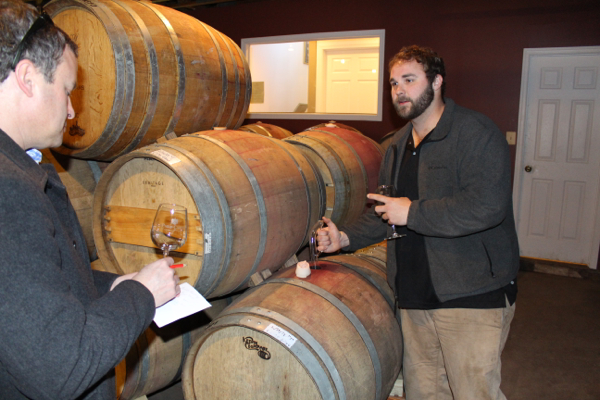
We also learned from Jeremy that a Viognier will be released this month, and future plantings in the vineyard will include Tannat and Petit Verdot. A follow up to the 2010 Cleve will be a tough order; however, we have no doubt that Jeremy Ligon is up to the task.
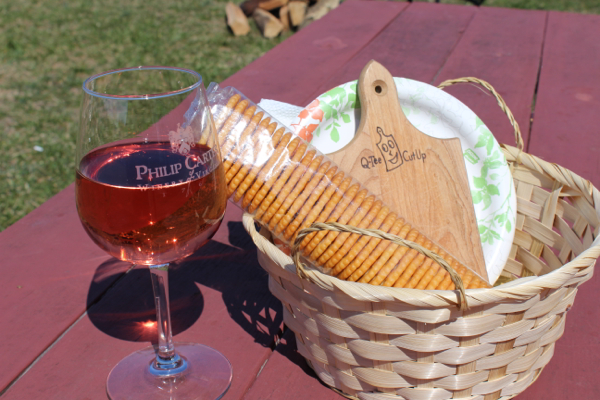
We did linger for a bit at Philip Carter Winery and shared a glass of the 2012 Rosewell. Fire pits warmed the air, so it felt just fine sitting outside and nibbling on cheese as we sipped away. Now that spring is in the air, why not plan a visit to Philip Carter Winery? And when you do, mention that Virginia Wine Time sent you!